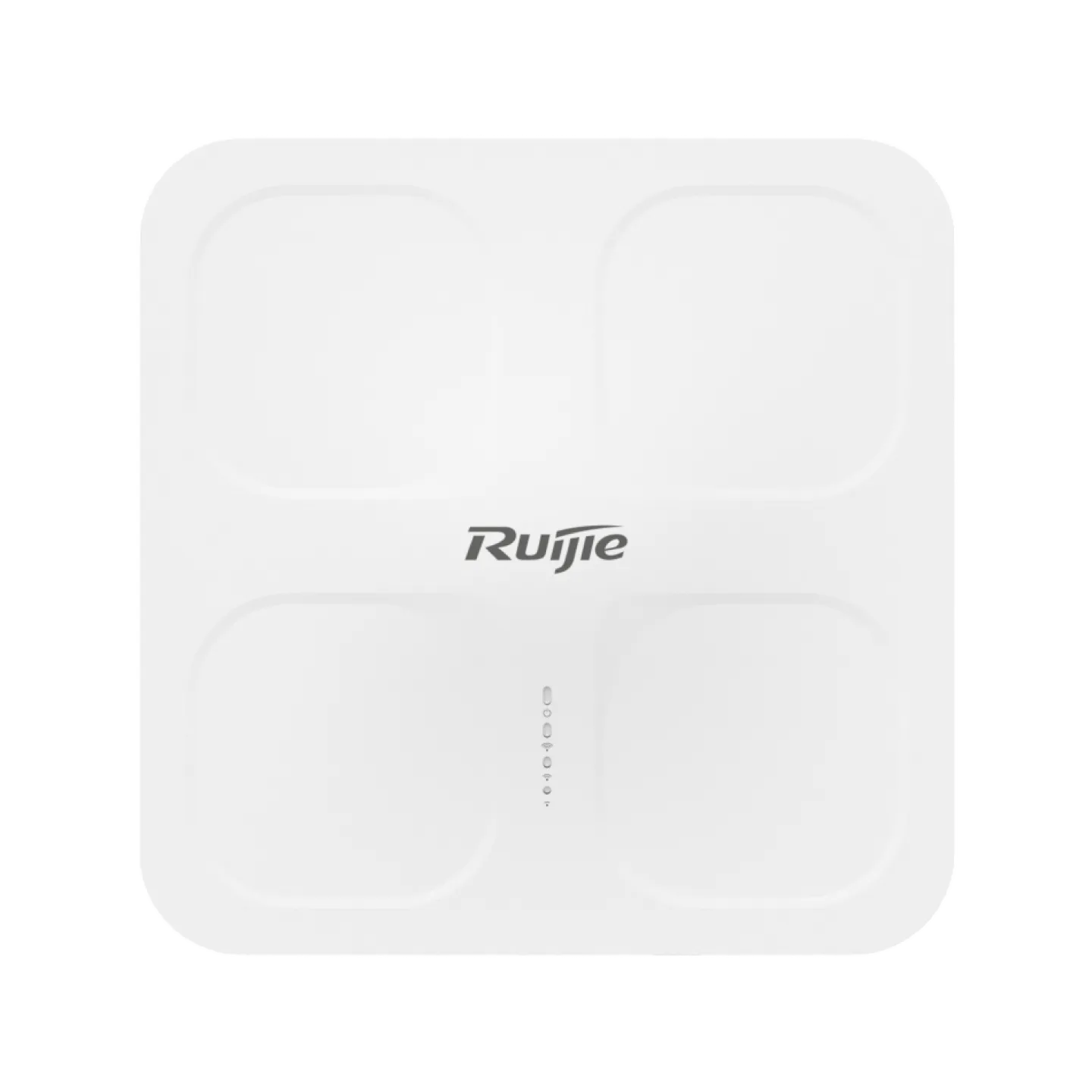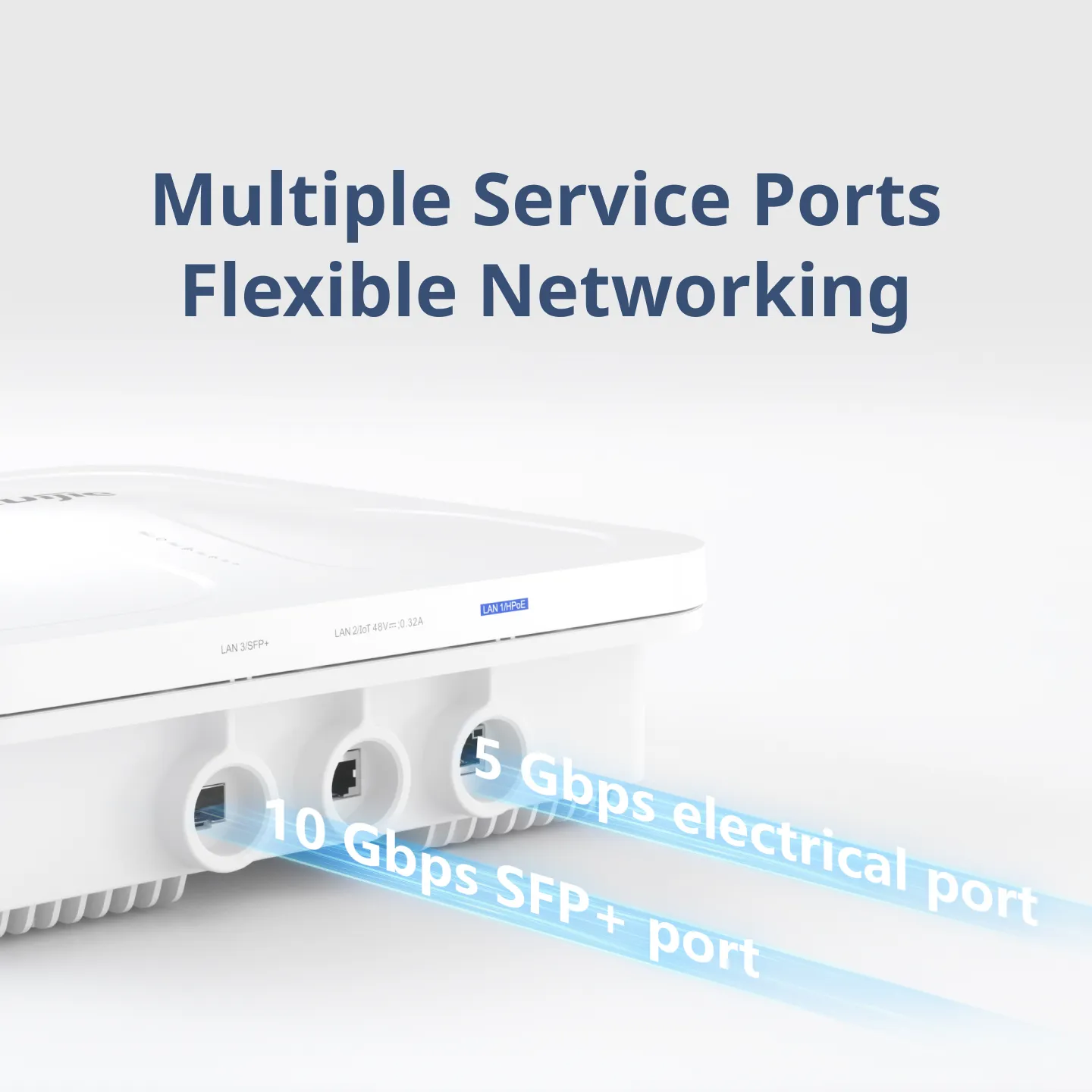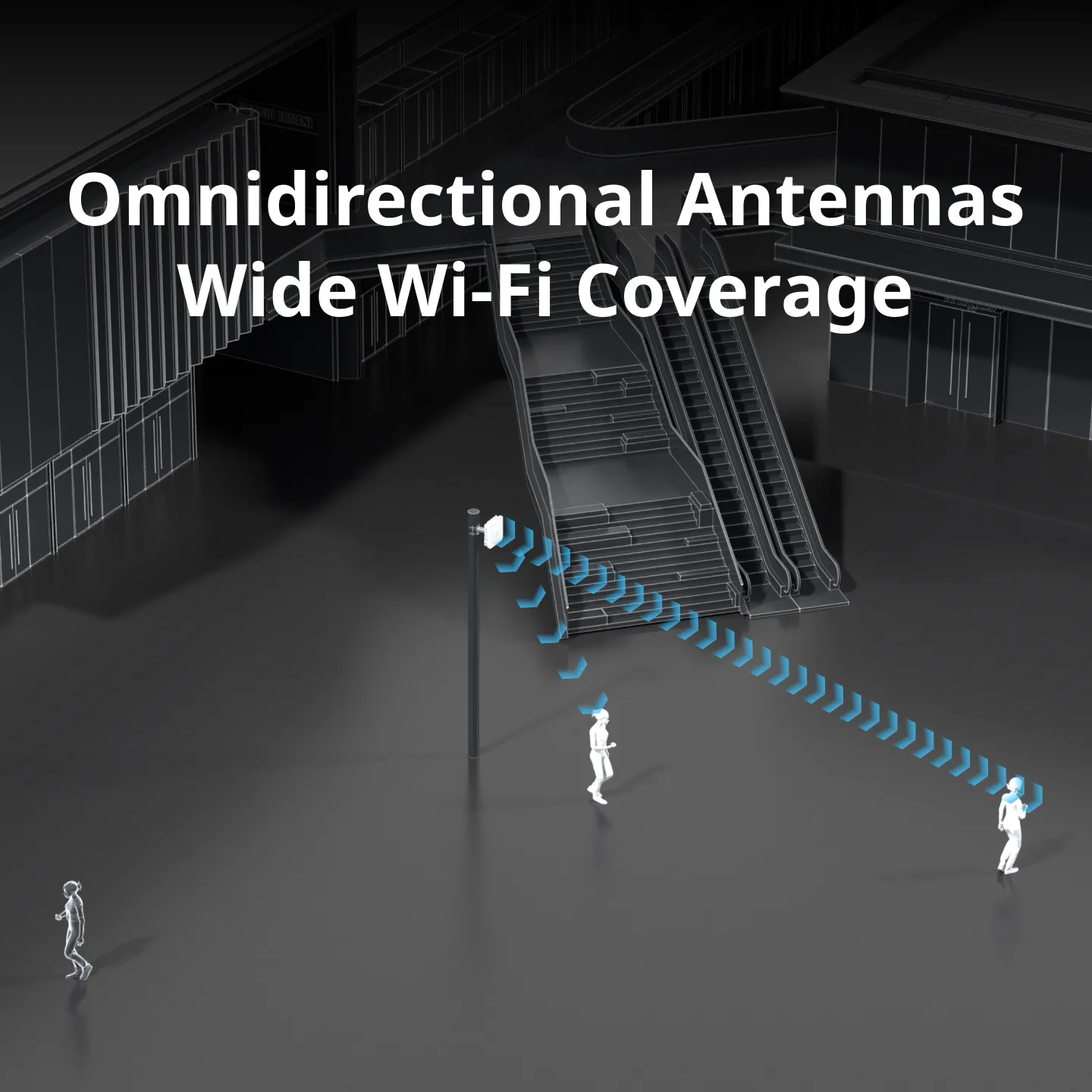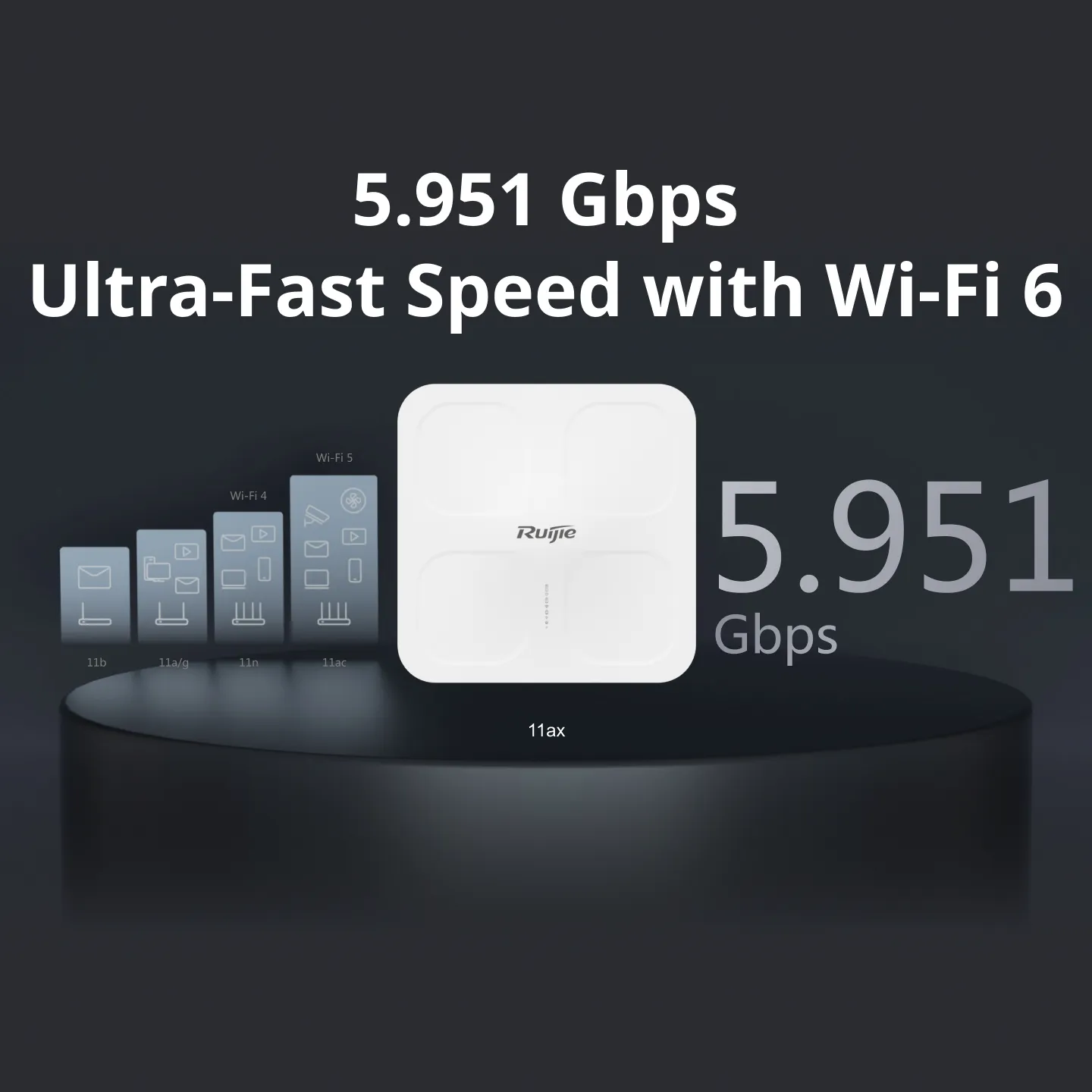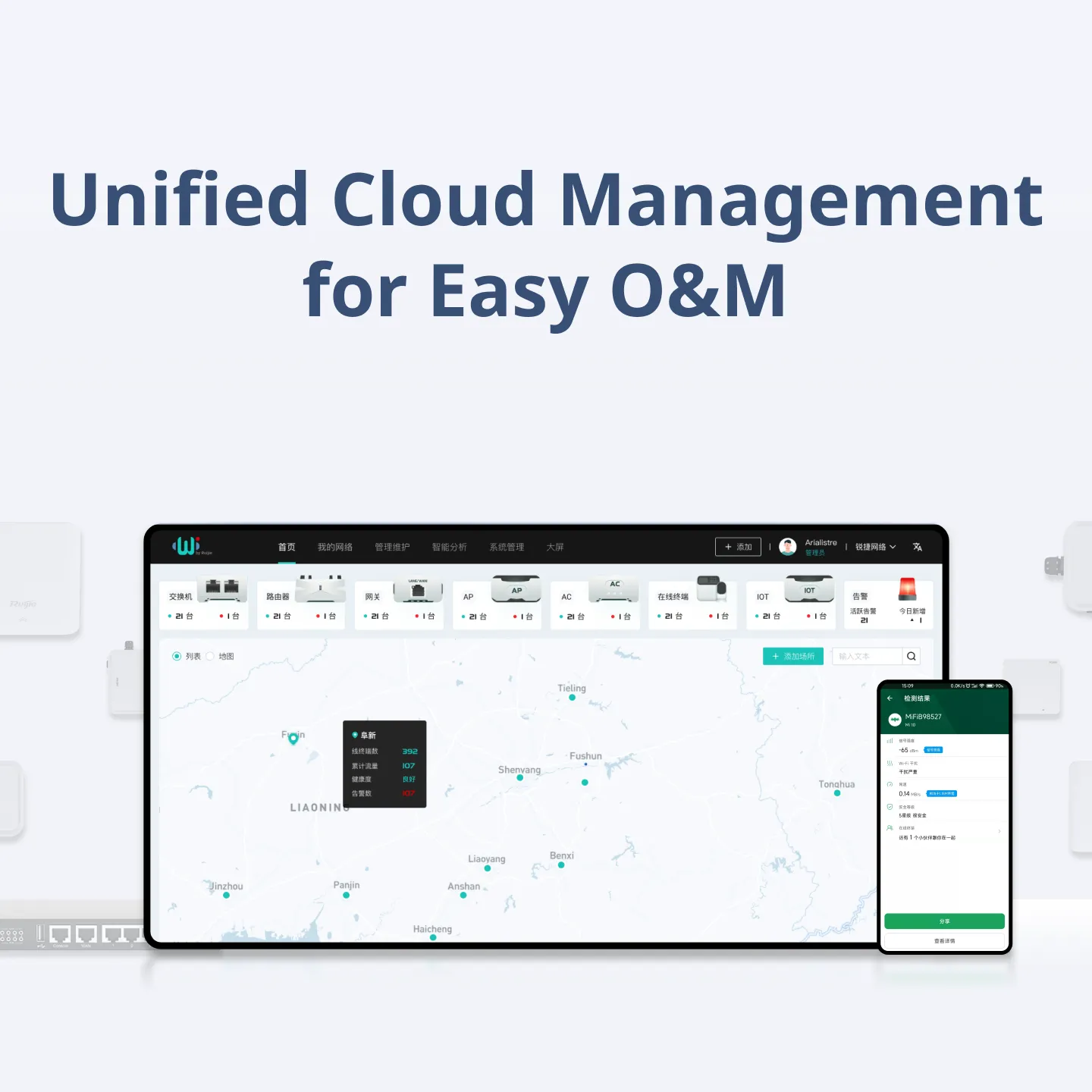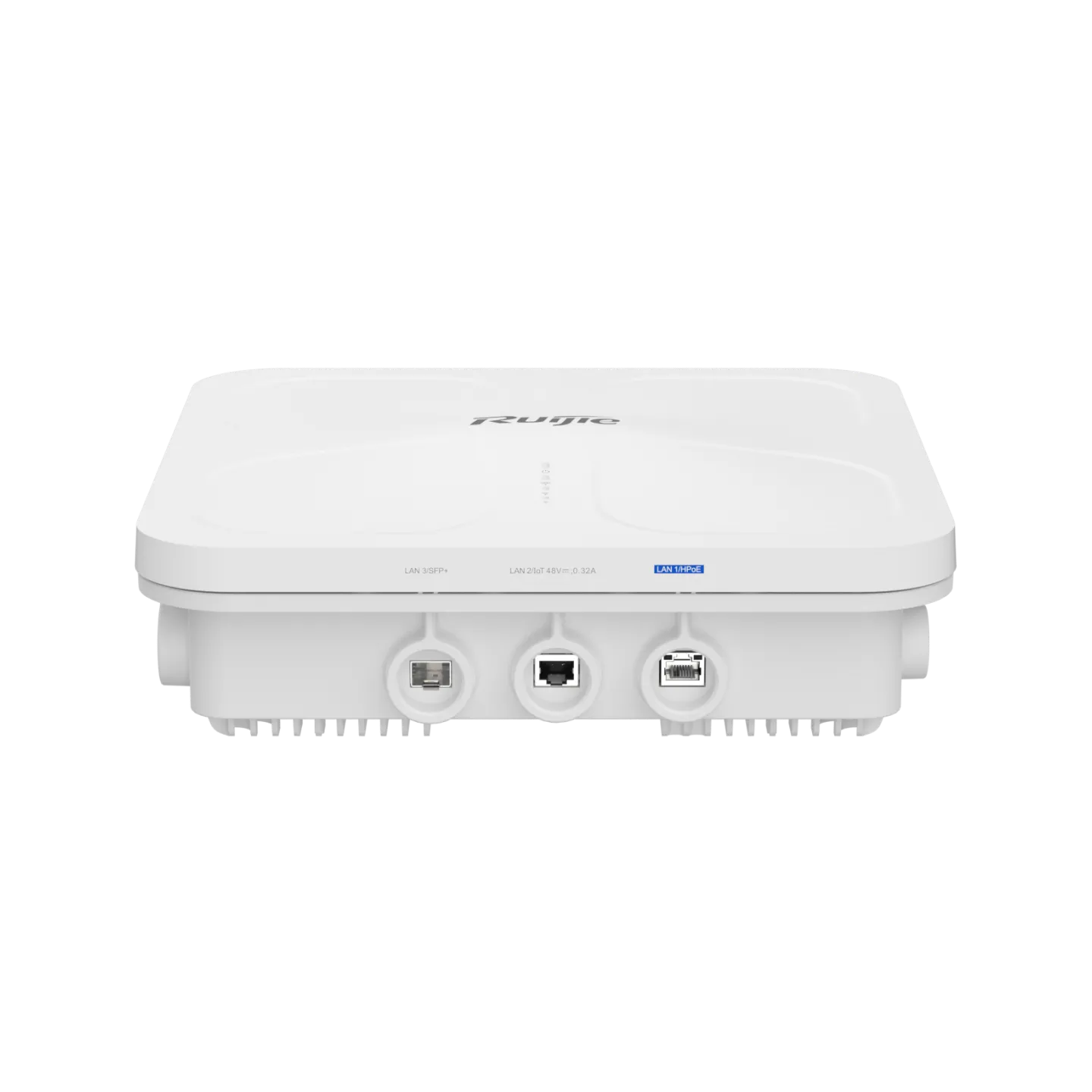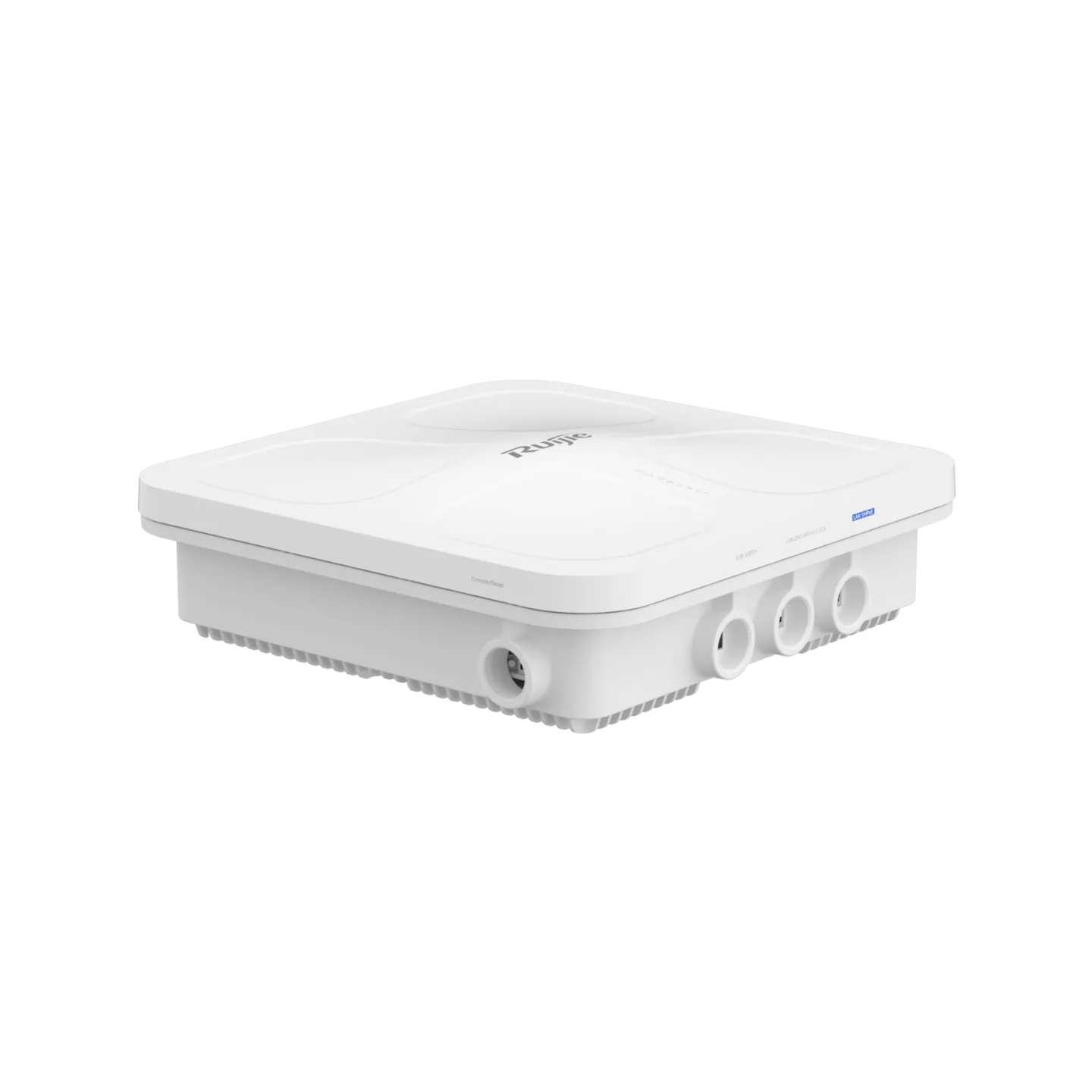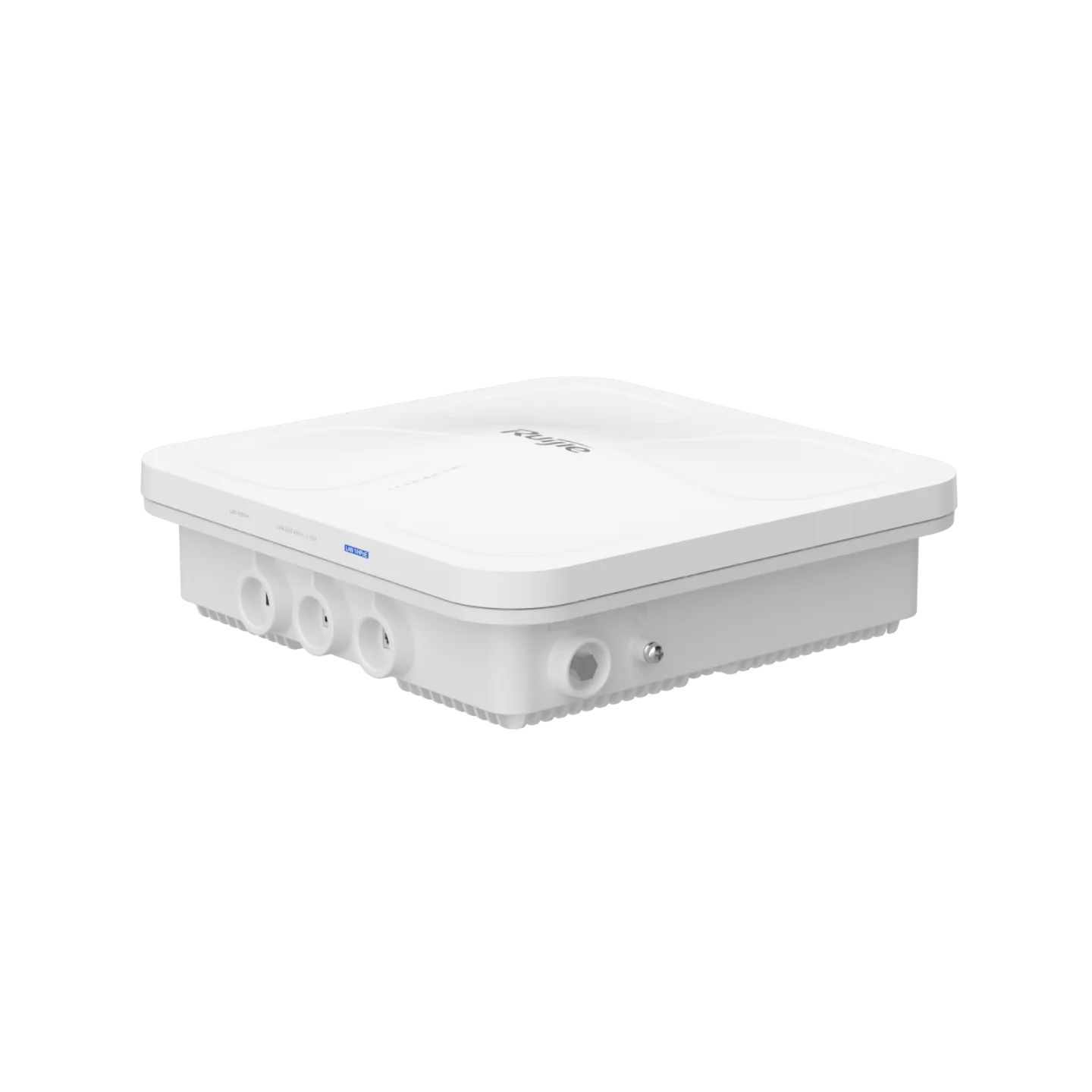High-Power Wi-Fi 6 Outdoor AP RG-AP680-IO
Ports
Dimensions
Multiple Service Ports, Flexible Networking
10 Gbps SFP+ port: Designed for Ruijie Optical i-Share+ Solution, enabling long-distance and high-bandwidth deployment for outdoor APs.
5 Gbps electrical port: Used for wired connection, meeting networking demands while reducing networking investment.
Omnidirectional Antennas, Wide Wi-Fi Coverage
Built-in 2.4 GHz / 5 GHz dual-band omnidirectional antennas with high transmit power of 30 dBm, enabling wide Wi-Fi coverage.
Beamforming technology, intelligently identifying the directions of mobile clients towards the AP, dynamic adjustment of signal coverage directions and strength, enhancing coverage accuracy and stability.
5.951 Gbps Ultra-Fast Speed with Wi-Fi 6
OFDMA and MU-MIMO technologies, ensuring concurrent robust connections for multiple clients
1024-QAM modulation, 25% higher data transmission rate than 802.11ac
OFDMA technology, reducing latency to 20 ms when data is transmitted to multiple clients simultaneously
WPA3 encryption protocol, greatly enhancing wireless security
Stable Running in Harsh Outdoor Environments
IP68 Protection
6 kV Lightning Protection
Wide Temperature Range
Unified Cloud Management for Easy O&M
WIS Cloud Network enables network-wide configuration and optimization.
It also supports O&M on the mobile app Wi-Fi Moho.
Go to WIS Cloud Network->
